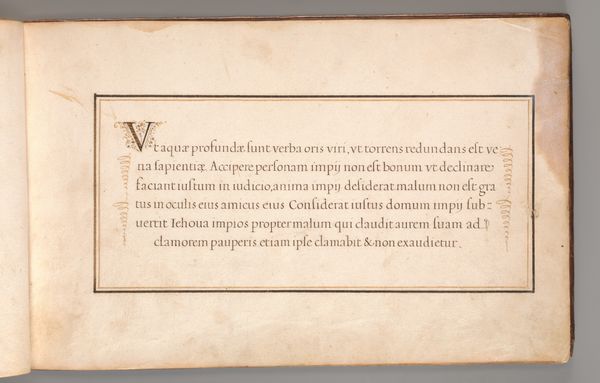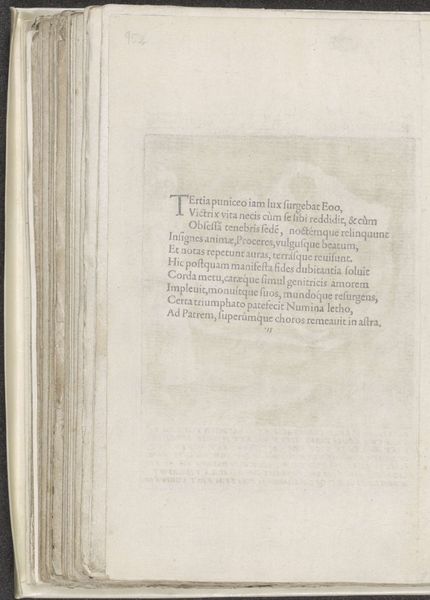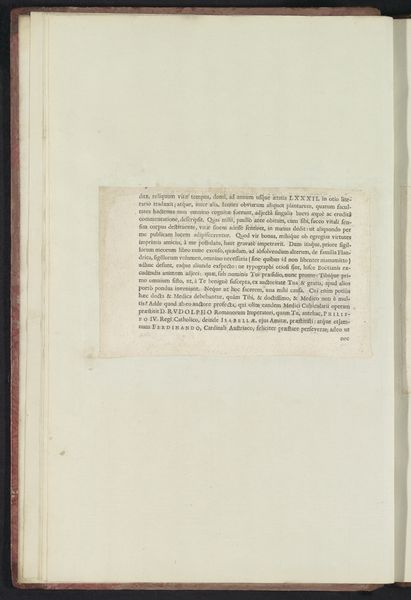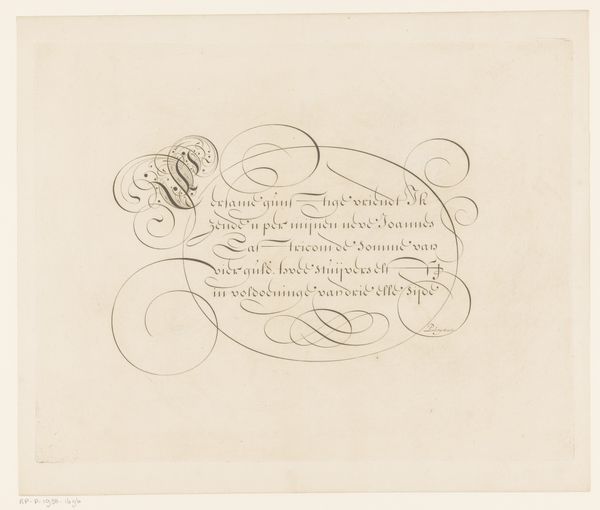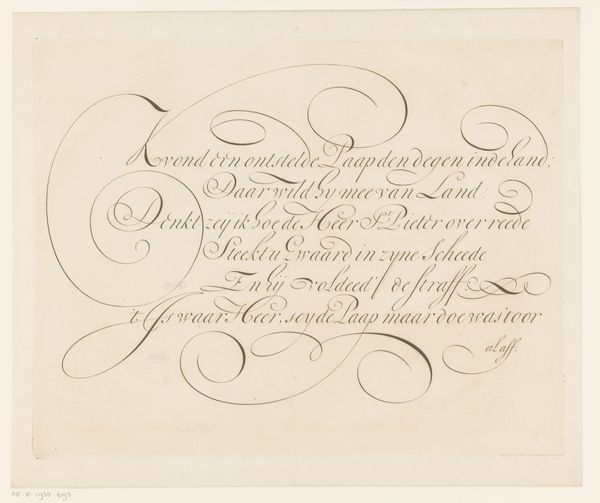
drawing, print, paper, ink
#
drawing
#
medieval
# print
#
paper
#
11_renaissance
#
ink
#
northern-renaissance
#
calligraphy
Dimensions: Overall: 6 3/4 × 11 1/16 in. (17.1 × 28.1 cm)
Copyright: Public Domain
Editor: Here we have a page from *Calligraphic Exercise in French,* created anonymously sometime between 1600 and 1625. It's ink on paper, and the text is so carefully drawn. What do you see in this piece, beyond the beautiful lettering? Curator: Well, let's start by acknowledging that calligraphy wasn't just about aesthetics. It was a deeply political act. Writing, literacy, these were forms of power, often wielded to reinforce social hierarchies. Considering that this is in French, could this be an act of cultural identity asserted? Editor: Interesting. So the act of writing itself is a statement? Curator: Absolutely. And think about the Reformation context; literacy enabled individual interpretations of scripture. Calligraphy became not just about religious orthodoxy but a space for individual expression. It's intriguing that this work doesn't explicitly focus on religious doctrine, and asks: whose voices are privileged and whose are marginalized in this era? Editor: So, while it seems simple, it's connected to much larger ideas. I wonder what other ways calligraphy played a part of resistance. Curator: Exactly. It becomes a silent but powerful medium through which artists engage with larger issues of social control and personal freedoms, echoing philosophical themes of the era. It encourages us to examine our own contemporary notions of language, communication, and resistance. What can the simple beauty of script hide? Editor: I hadn’t considered that. Thanks! That gives me a lot to think about when I see other calligraphic works. Curator: Me too! It’s been fun to have this discussion.
Comments
No comments
Be the first to comment and join the conversation on the ultimate creative platform.

